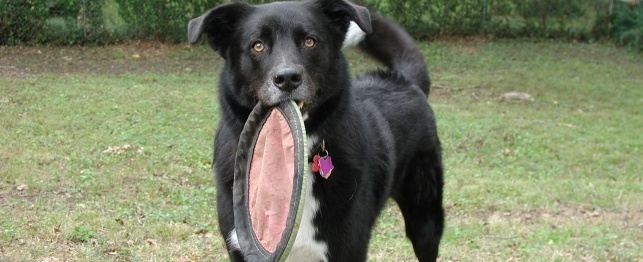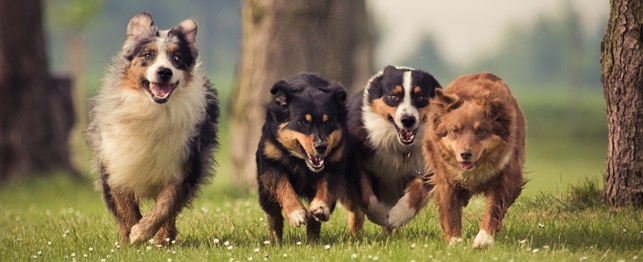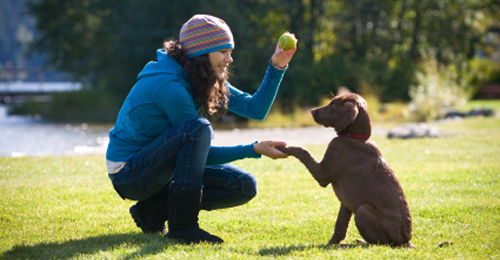A dog communicates with you by barking or through body language. Unlike humans, and like other animals, dogs communicate more via body language than barking. By understand common dog body language you will understand you pet better and have a closer relationship with him.
Once you have lived with your pet for a while his idiosyncrasies will be obvious but until them here are a few common signals in the meantime.
Let's start with the fun things first. A dog that has it's rear in the air and tail wagging is generally in a happy or playful mood. This will be accompanied by a prancing or jumping motion. The head will be lowered to the ground but the eyes will be focused on you or the object that is causing the dog to act playful. The mouth will be open in a smile.
Rolling over to expose the belly is generally a sign of submission to you or another dog. It is an acknowledgment of pack hierarchy. Other body language that indicates submission to the hierarchy is a wagging tail in a lowered position. It may also have the ears back and the eyes will be lowered to the ground.
The dog language of a dog in a relaxed mood is as you would expect. The dog's weight will be even distributed and it will stand up straight. The tail may wag in a lazy way half way up. The head will be up, with the eyes focused on something that is of interest.
The dog will look the same if it is suddenly alerted to something. However it my start to put more weight on the front feet, leaning forward. The hair around the joint between the tail and back may raise up. The head will point in the direction of the noise with eyes focused and ears pricked towards the source of attention.
Aggressive body language is again similar to excited or alert behavior. The dog will be leaning forward. However the general demeanor is different. The hackles may raise. This is the fur on the shoulder blades just below the neck. It is very noticeable when this happens. The eyes will be staring intently at the object of potential aggression. The muzzle will change. The top lips will rise to reveal the teeth and the dog may begin to snarl.
Once you have seen these signals once or twice in your pet, you will understand what they mean. You will be able to modify your behavior or even the dogs if you feel that it is not appropriate. It can also help you understand what kind of behavior training your dog needs based on it's body language to you.

 How to Balance Your Pets Play and Relaxation
How to Balance Your Pets Play and Relaxation
How to Balance Your Pets Play and Relaxation
How to Balance Your Pets Play and Relaxation
 Safe Fetch Toys for Your Dog
Safe Fetch Toys for Your Dog
Safe Fetch Toys for Your Dog
Safe Fetch Toys for Your Dog
 Parks & Recreation: 7 Tips for Enjoying Dog Parks
Parks & Recreation: 7 Tips for Enjoying Dog P
Parks & Recreation: 7 Tips for Enjoying Dog Parks
Parks & Recreation: 7 Tips for Enjoying Dog P
 Secrets To German Shepherd Coaching
Keep the courses sessions short but often. When things lose
Secrets To German Shepherd Coaching
Keep the courses sessions short but often. When things lose
 Doggie Day Care
Doggie Day Care
Doggie Day Care
Doggie Day Care